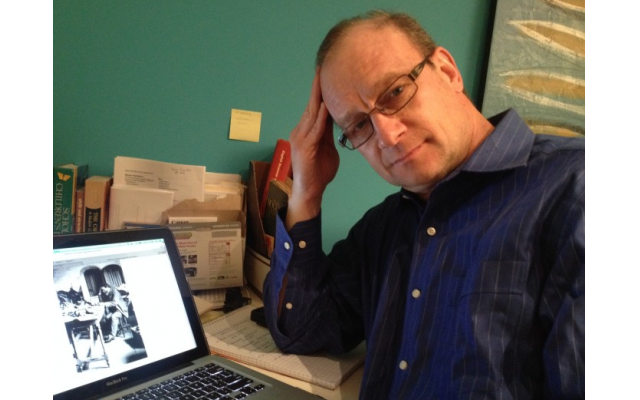Are Jews Facing A “Clear and Present Danger”?
The breaking news of the massacre last October at the Tree of Life synagogue felt like a punch in the gut.
Dave Schechter is a veteran journalist whose career includes writing and producing reports from Israel and elsewhere in the Middle East.
The breaking news of the massacre last October at the Tree of Life synagogue felt like a punch in the gut.
My initial reaction to the shootings at Chabad of Poway was less one of shock than of revulsion.
Another terrorist attack in an American synagogue as Jews worshipped on a Shabbat morning – six months to the day after the Pittsburgh tragedy.
The (alleged) gunman posted a manifesto on a social media site frequented by purveyors of racial, religious and ethnic hate. He expressed his “disgust” of Jews, swore allegiance to white supremacy, made clear his intentions, and wanted it understood that he did not suffer from a mental defect.
My second thought was: When will this (four-letter word beginning with “s”) stop?
Perhaps when these incidents are viewed less as the work of an individual and more as representation of a “virtual” mob.
Deborah Lipstadt, the Emory University professor and Holocaust scholar, addressed this point on Twitter: “I keep hearing that the shooter in San Diego ‘acted alone.’ He did not. He was inspired, supported by, and egged on by white supremacist websites. No one may have given him instructions, but this is not a ‘lone actor.’”
The phrase that played through my thoughts was “clear and present danger.”
There is a legal doctrine stemming from Schenck v. United States, a 1919 case before the U.S. Supreme Court, that attempts to define what constitutes a “clear and present danger.”
Charles Schenck, general secretary of the American Socialist Party, admitted to mailing anti-draft circulars to men scheduled to enter military service. Accused of interfering with the law authorizing the draft, Schenck argued that he had exercised his free speech rights under the First Amendment of the Constitution.
Supreme Court Justice Oliver Wendell Holmes held that the determining factor in whether the government should limit free speech was “whether the words … are used in such circumstances as to create a clear and present danger.”
Holmes later cautioned against too-hasty action. Writing in the case Abrams v. United States, in which the high court upheld the Espionage Act of 1917, he said that “we should be eternally vigilant against attempts to check the expression of opinions … unless they so imminently threaten immediate interference with the lawful and pressing purpose of the law that an immediate check is required to save the country.”
Having spent more than 40 years in a profession that relies on the First Amendment’s freedom of the press provisions, I am slightly uncomfortable even asking this question: Does the proliferation of anti-Jewish speech online, with its encouragement of violence, constitute a “clear and present danger” that warrants a more aggressive response by law enforcement?
Even if there is no clear-cut answer – and I wouldn’t expect there to be – perhaps at least the question merits discussion.
Certainly, if these attacks were being committed by robed and hooded Klansmen, the Justice Department would be under pressure to move the proverbial heaven and earth to root out not only the perpetrators but also the enterprise supporting them.
Not only did 2018 include the deadliest attack on Jews in American history, but according to the Anti-Defamation League’s annual audit of anti-Semitic activity, the Tree of Life killings were just one of 39 reported incidents of assaults on Jewish individuals – an increase of 105 percent from the previous year.
A line can be drawn from the tiki torch-carrying mob that marched in Charlottesville two years ago chanting “Jews will not replace us” to the dead and wounded last year at the Tree of Life Synagogue and now to the dead and wounded at Chabad of Poway.
Indeed, the accused in Poway helps to draw that line by citing as sources of inspiration the massacre at Tree of Life and the shooting rampage in March at two mosques in Christchurch, New Zealand.
After Pittsburgh, the call was “Never Again!” And after Poway, the call is “Never Again!”
The virulent anti-Semitism behind the terrorism in Pittsburgh and Poway may not feel like a “clear and present” to many Americans, but Jews are left wondering how imminent is the next Pittsburgh, the next Poway.




comments